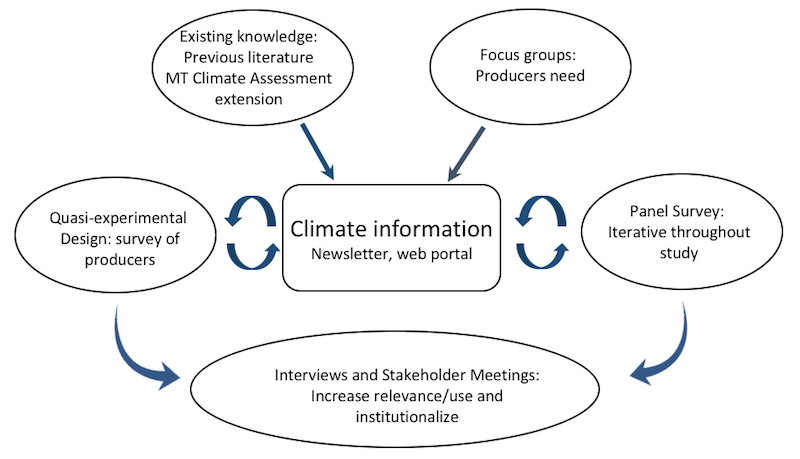Project Overview
Objectives
- Transform existing forecasts and projections into innovative and relevant climate information that meets producer needs and communicates relevant details in compelling and useful formats.
- Develop a detailed understanding of how this information is utilized in producer decisions about water use and conservation, and adaptation to drought and variability.
- Compare the efficacy of different communication strategies and media, the perceptions and decisions of different types of producers, and the barriers and constraints to adoption of water conservation behaviors.
- Institutionalize long-term programs that provide relevant, adaptable climate information, with mechanisms for regular feedback from producers.
Approach

Impact
- Improve adaptation to both drought and water variability
- Sustain agricultural livelihoods
- Revitalize rural communities
- Advance food security
- Maintain ecosystem services
This research will provide guidance for best practices for delivering climate information to agricultural producers throughout the US, and will have a transformative and lasting impact on the ways that producers use water and how they plan for drought and water variability. This project has the potential to make important contributions to the social science literature on climate information and decision-making, especially in agricultural contexts.
Timeline
-
Year 1: Develop newsletter and web prototypes, conduct focus groups and analyze data, revise climate information, develop sample for experiment, develop manuscript on focus group results.
-
Year 2–3: Produce quarterly climate information, conduct panel study.
-
Year 4: Conduct survey and analyze data, convene stakeholders, conduct interviews and analyze data, convene stakeholders to develop plan to institutionalize findings, develop manuscripts.